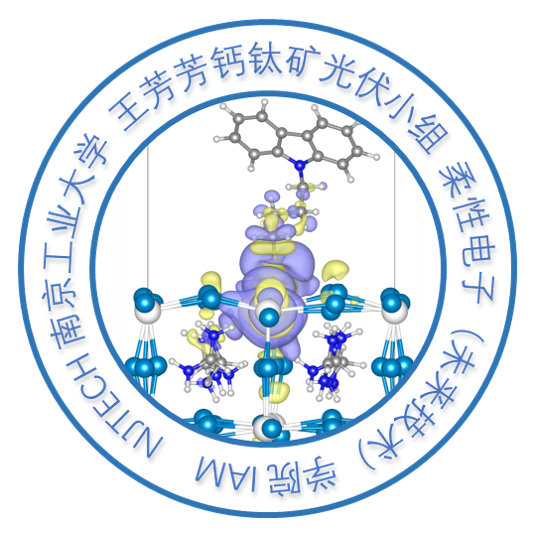一种用于疏水颗粒级封装钙钛矿太阳能电池的逐步熔融聚合分子
A Stepwise Melting-Polymerizing Molecule for Hydrophobic Grain-Scale Encapsulated Perovskite Solar Cell. Adv. Mater. 2024, 2410395

尽管钙钛矿太阳能电池的效率在不断提高,但钙钛矿的稳定性问题一直是其商业化的重大障碍。为了应对这一挑战,2024年11月13日南京工业大学王芳芳于Adv. Mater.刊发逐步熔融-聚合分子实现晶粒级封装钙钛矿太阳能电池,设计了一种逐步熔融聚合分子(SMPM)作为FAPbI3钙钛矿的添加剂。在钙钛矿退火过程中,SMPM经历了三个阶段的相变:最初从固态融化到液态,然后是溢出晶界,最后自聚合形成钙钛矿太阳能电池中的疏水晶粒级包封,从而防止湿度引起的降解。利用这一独特的性质,再加上改进结晶、减少非辐射复合和能级定向等优点,小面积的FAPbI3基钙钛矿太阳能电池的转换效率实现了25.21%,同时1 cm2大面积也达到了22.94% 的光电转化效率,在85%相对湿度下老化2000 h后,其PCE仍然保留初始效率的95%。此外,没有外部封装的SMPM基钙钛矿太阳能电池在水下工作时也保持了良好的稳定性,其中黑色FAPbI3相保持不变,也抑制了Pb泄漏。因此,SMPM策略可以为钙钛矿太阳能电池的商业化提供稳定和环境问题的可持续解决方案。
Despite the ongoing increase in the efficiency of perovskite solar cells, the stability issues of perovskite have been a significant hindrance to its commercialization. In response to this challenge, a stepwise melting-polymerizing molecule (SMPM) is designed as an additive into FAPbI3 perovskite. SMPM undergoes a three-stage phase transition during the perovskite annealing process: initially melting from solid to liquid state, followed by overflowing grain boundaries, and finally self-polymerizing to form a hydrophobic grain-scale encapsulation in perovskite solar cells, providing protection against humidity-induced degradation. With this unique property, coupled with the advantages of improved crystallization, diminishednon-radiative recombination, and energy level alignment, FAPbI3-based perovskite solar cells with a 25.21% (small-area) and 22.94% (1 cm2) power conversion efficiency and over 2000 h T95% stability under 85% relative humidity is achieved. Furthermore, the SMPM-based perovskite solar cells without external encapsulations sustain impressive stability during underwater operation, in which the black FAPbI3 phase is maintained and Pb-leakage is also effectively suppressed. Therefore, the SMPM strategy can offer a sustainable settlement in both stability and environmental issues for the commercialization of perovskite solar cells.
原文:
https://doi.org/10.1002/adma.202410395
